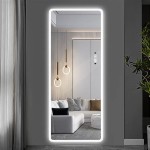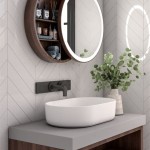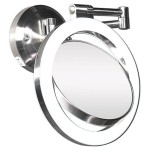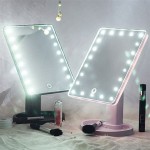Dresser Mirror Mounting Brackets: A Comprehensive Guide
Dresser mirror mounting brackets are essential components for securely attaching a mirror to a dresser. They provide stability, support, and the desired angle for viewing. Selecting the correct brackets and understanding their installation are crucial for a functional and aesthetically pleasing dresser mirror setup. This article will explore various types of mounting brackets, factors to consider when choosing them, and a step-by-step guide to proper installation.
The primary function of dresser mirror mounting brackets is to connect the mirror frame to the dresser's surface. These brackets need to be sturdy enough to support the weight of the mirror while maintaining the desired tilt. The construction material, design, and size of the brackets all play a role in their overall performance. In addition, aesthetics are a consideration, as the brackets should complement the style of both the dresser and the mirror.
Types of Dresser Mirror Mounting Brackets
Several types of dresser mirror mounting brackets are available, each with its own advantages and drawbacks. Understanding the differences between these types is essential for selecting the most appropriate option for a specific application.
Standard Brackets: These are the most common type of dresser mirror mounting bracket. They typically consist of two metal pieces – one that attaches to the back of the mirror frame and another that attaches to the top of the dresser. The two pieces are then connected using screws or bolts, allowing for adjustment of the mirror's tilt. Standard brackets are generally made of steel or iron and are available in various sizes and finishes.
Swivel Brackets: Swivel brackets offer greater flexibility in adjusting the mirror's angle. They feature a rotating mechanism that allows the mirror to be tilted and swiveled for optimal viewing. This is particularly useful for dressers used by multiple people with varying heights or preferences. Swivel brackets tend to be more complex in design and may require more precise installation.
Concealed Brackets: For a cleaner, more modern look, concealed brackets are an excellent choice. These brackets are designed to be hidden from view once the mirror is installed. They typically involve a system of slots or grooves that allow the mirror to slide onto the dresser. Concealed brackets often require more specialized installation techniques and may not be suitable for all types of mirrors or dressers.
L-Shaped Brackets: L-shaped brackets offer a simple and robust solution for mounting dresser mirrors. They are typically made of heavy-duty metal and provide excellent support. One leg of the "L" attaches to the mirror frame, while the other attaches to the dresser. While they offer good stability, they might not provide as much adjustability as other types of brackets.
Adjustable Angle Brackets: These brackets are designed with a specific mechanism that allows the angle of the mirror to be easily adjusted and locked into place. This might involve a series of notches or a screw-tightening system. They are useful for situations where the mirror angle needs to be changed frequently.
The choice of bracket type will depend on factors such as the desired adjustability, aesthetic preferences, and the weight and size of the mirror.
Factors to Consider When Choosing Dresser Mirror Mounting Brackets
Choosing the right dresser mirror mounting brackets involves careful consideration of several factors. Selecting the wrong brackets can lead to instability, damage to the mirror or dresser, and an unsatisfactory aesthetic. These factors are detailed below:
Weight of the Mirror: The weight of the mirror is a critical consideration. The brackets must be strong enough to support the mirror's weight without bending, breaking, or causing the mirror to detach from the dresser. Heavier mirrors require more robust brackets made of thicker metal. The manufacturer's specifications for the bracket's weight capacity should always be carefully reviewed.
Size and Dimensions of the Mirror: The size and dimensions of the mirror also play a role in bracket selection. Larger mirrors require brackets that are spaced further apart to provide adequate support. The brackets should also be appropriately sized to fit the mirror frame without being too small or too large. Oversized brackets can be unsightly, while undersized brackets may not provide sufficient support.
Dresser Material and Construction: The material and construction of the dresser are important factors to consider. Dressers made of solid wood can typically support heavier mirrors and more elaborate bracket systems. Dressers made of particleboard or MDF may require more careful bracket selection and installation to avoid damage. Reinforcement may be necessary for weaker materials.
Desired Adjustability: The level of adjustability desired for the mirror's angle will influence the type of bracket chosen. If flexibility is important, swivel brackets or adjustable angle brackets are good options. If a fixed angle is sufficient, standard or L-shaped brackets may be more appropriate.
Aesthetic Preferences: The aesthetic appearance of the brackets should complement the style of both the mirror and the dresser. Brackets are available in various finishes, such as brass, chrome, black, and white. Concealed brackets offer a clean, minimalist look, while more decorative brackets can add visual interest. Color should also be meticulously chosen to match the existing furniture.
Installation Complexity: The complexity of the installation process is another factor to consider. Some brackets are easier to install than others. If you are not comfortable with DIY projects, it may be best to choose brackets that are simple to install or to hire a professional installer.
By carefully considering these factors, it is possible to select dresser mirror mounting brackets that provide the necessary support, stability, and aesthetic appeal.
Step-by-Step Guide to Installing Dresser Mirror Mounting Brackets
Proper installation of dresser mirror mounting brackets is essential for ensuring the stability and safety of the mirror. The following step-by-step guide provides a general overview of the installation process. Always refer to the manufacturer's instructions for specific recommendations.
Preparation: Gather all necessary tools and materials, including the mounting brackets, screws, a drill, a screwdriver, a measuring tape, a level, and a pencil. Ensure that the work area is well-lit and free of clutter.
Marking the Bracket Locations: Use a measuring tape and pencil to mark the locations for the brackets on the back of the mirror frame and on the top of the dresser. Ensure that the marks are accurate and aligned. This is a crucial step to ensure the mirror is properly positioned and balanced.
Pilot Holes: Drill pilot holes at the marked locations. This will make it easier to insert the screws and prevent the wood from splitting. The size of the pilot holes should be slightly smaller than the diameter of the screws.
Attaching the Brackets to the Mirror Frame: Attach the brackets to the back of the mirror frame using the screws. Ensure that the brackets are securely fastened and aligned properly. Avoid over-tightening the screws, as this can damage the frame.
Attaching the Brackets to the Dresser: Attach the corresponding brackets to the top of the dresser using the screws. Again, ensure that the brackets are securely fastened and aligned properly. Consider the weight distribution of the mirror when positioning the brackets.
Connecting the Mirror to the Dresser: Carefully lift the mirror and align the brackets on the mirror frame with the brackets on the dresser. Connect the brackets using screws or bolts, depending on the type of bracket. Ensure that the connections are secure and that the mirror is stable.
Adjusting the Mirror Angle: If the brackets allow for adjustment of the mirror's angle, adjust the angle to the desired position. Use a level to ensure that the mirror is level.
Final Inspection: Inspect the installation to ensure that all connections are secure and that the mirror is stable. Make any necessary adjustments. Clean the mirror surface to remove any fingerprints or smudges.
Following these steps will help ensure a safe and successful installation of dresser mirror mounting brackets. If you are unsure about any aspect of the installation process, it is best to consult with a professional installer.
In addition to the above steps, it is important to consider the specific type of wall and the weight of the mirror when choosing hardware. For heavier mirrors, it may be necessary to use wall anchors to provide additional support. Always consult with a hardware professional to determine the appropriate hardware for your specific situation.
Regularly inspect the mounting brackets for any signs of wear or damage. Tighten any loose screws and replace any damaged brackets promptly. This will help ensure the long-term stability and safety of the mirror.

Heavy Duty Dresser Mirror Support Brackets Made In The Usa

Bracket Assembly For Dresser Mirror Supports

Mirror Supports Moheco S

2 Mirror Supports Slotted For Dressers Furniture 48 L

Dresser Mirror Brackets September 2024 Your Guide

Furniture Of America 19 X 24 Dresser Mirror Gray Com

How To Fasten A Mirror Dresser Swiss Valley Furniture

Mirror Supports Rockler Woodworking Tools

Dresser Mounted Mirrors Mirror Accessories At Com








